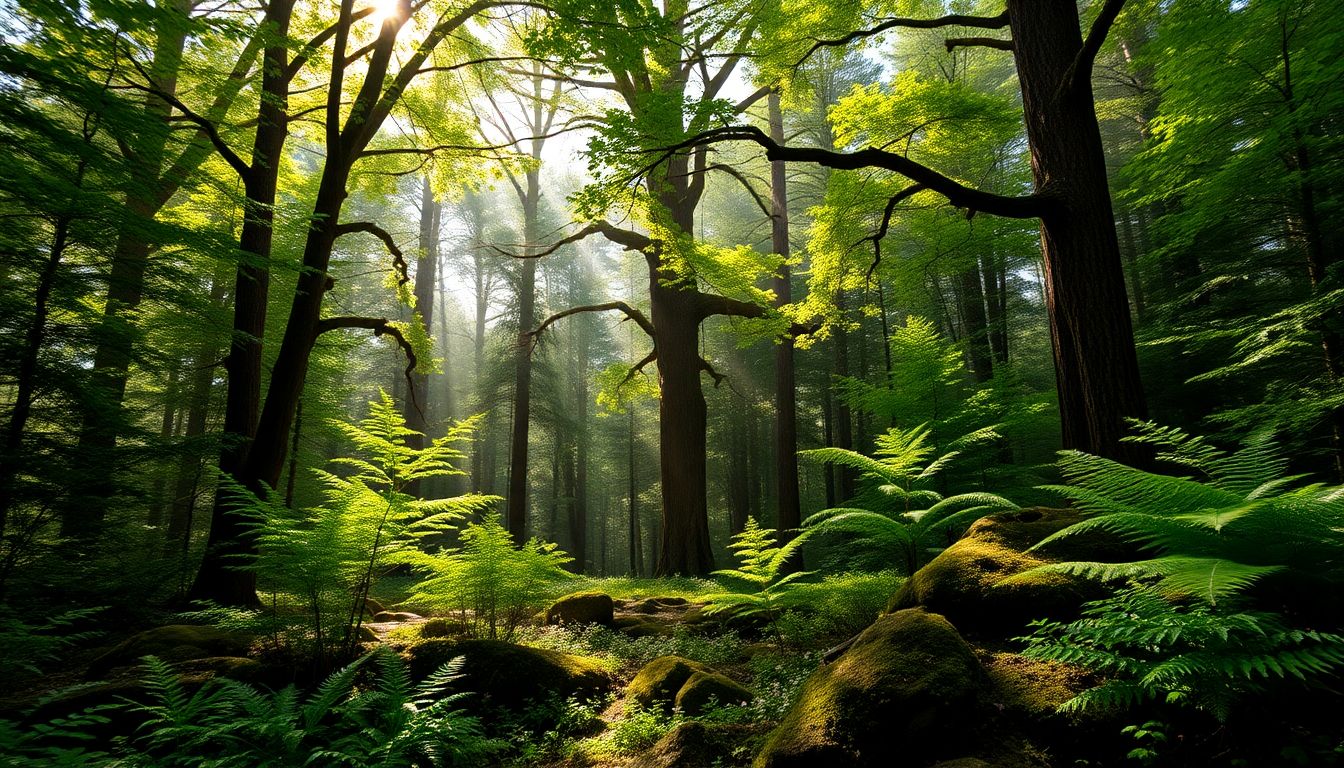Introduction
Besides being picturesque, forests in the United States perform very many functions in keeping our globe healthy: they host wildlife, combat climate change, and serve people from millions. The country has an enormous diversity of forests spread throughout the regions: each having its own climate and tree species. The challenges related to the environment are growing, and they increasingly make it all the more important for us to see how we can protect and manage these vital lands. Everyone plays a part in ensuring future generations can enjoy America’s lush forests.
Size, Distribution, and Types of US Forests
Scope of US Forests
Approximately 766 million acres of forested land are available in the United States. These forests extend from the cold tundra of Alaska to the warm woods of the Southeast. They cover around one-third of a country – their area makes them an essential part of the national landscape. This prettiness enhances but does not complete the value-added services provided by the forests in terms of filtering our water, enriching the soil, and maintaining air quality.
US Forest Types
Temperate Deciduous Forests
These forests mostly occurred in the Eastern part of the US. The characteristic trees of this forest type are deciduous, such as oaks, maples, and beeches, which lose their leaves in winters, have nature teeming with life, and acquire pleasing hues in autumn.
Boreal (Coniferous) Forests
Boreal forest is found in Alaska and in the northern states of the USA. Dominated by tree species such as pine, spruce, and fir, these boreal forests provide homes and habitats to creatures like wolves, moose, as well as many bird species. They remain vital since they help keep global carbon levels in check.
Mediterranean and Desert Forests
Primarily in California and the Southwest, these forests have adapted to dry conditions. Including chaparral and Joshua trees, these small areas represent considerable portions of their ecosystems.
Regional Distribution and Density
Variation is the rule in the case of states. The Pacific Northwest is thick, while Midwest parts have fewer trees. The Southeast has areas of hardwood forest, while the southwestern desert has tough trees and hardy bushes.
Ecological and Economic Significance of US Forests
Biodiversity and Habitat
Forests have homes for many animals. Deer and bears walk through the woods and migratory birds visit them as they migrate. These ecosystems are vital natural balancing elements in maintaining healthy balance.
Economic Contributions
Forests give rise to a wealth of job types, from logging to tourism. Provision of raw material to the timber industry for wood house and paper products is complemented by the millions of park and hiking trail enticements to surrounding local economies. Source of livelihoods and cultural experiences for native communities dependent on forests.
Regulation of Climate and Carbon Sequestration
Forests take up carbon dioxide in the air and in small measure help in slowing down climate change. These then act as natural sponges for all greenhouse gases and keep our air cleaner. Such an environmentally friendly scenario makes forests important tools in the campaign against the global warming phenomenon.
Importance of Major Initiatives in Conservation and Management of Forests
National Agencies and Policies
The federal government manages the forests through the U.S. Forest Service, the Bureau of Land Management, and the National Park Service. Governing acts such as the National Forest Management Act lead to sustainable practices. Such measures intend to balance off growth, recreation, and preservation.
Consolidation Measures and Protection Programs
There are many national forests and protected areas throughout the country. It has involved planting new trees through reforestation strategies following wildfires or deforestation. Other functions include wildfires and invasive species control. Recent success has been reported on Sierra Nevada’s restoration efforts.
Challenges of Forest Management
The challenge of managing forests. Their habitats suffer from deforestation and illegal logging. They destroy vast areas of woodland due to occasional fiery blasts, often aggravated by climate change. Bark beetles and other invasive plant species are pests and harm the native trees, thus complicating forest management.
Threats to US Forests Today
Effects of Climate Change
Climate change poses many threats to forests. High temperatures lead to increased number and intensity of wildfires and the ranges of species shift. These adversely affect forests in terms of health.
Human Activities and Urbanization
The areas where forests formerly stood are now becoming towns and croplands. Habitat loss comes with construction, roads, and resource extraction. This has made minimizing forest cover and fragmenting habitats difficult, making it hard to live wildlife in the habitat.
Biological Threats
Kill millions of trees and weaken forests through insecurities from bark beetles. Some diseases wipe out an entire species and disturb the local ecosystem. It is a constant fight to keep these under control.
Forward-looking and Sustainable Practices
Innovative Conservation Techniques
Drones and GIS mapping would monitor the health of the forest. Community participation in forest management is also part of the big contribution. Efforts to restore damaged areas and fire prevention are often spearheaded by local groups.
Promoting Sustainable Use
Responsible logging practices are encouraged by the FSC and SFI certification schemes. Educational campaigns tend to spread the word to consumers and the legislature. Making differences by selecting sustainable wood products and having a hand in conservation can help everyone.
Action Points for Individuals and Communities
- Support companies which use sustainably harvested wood.
- Volunteer to help tree plant and clean-up work in your area.
- Lobby for proforest and anti-climate-change policies.
Conclusion
The United States, after all, have forests that serve as green lungs breathing life into our world. They hold invaluable diversity and serve multitudes of benefits. They encounter, yet, serious and challenge threats such as climate change, deforestation, and pests. The importance of these lands, therefore, calls for continuous action, if not joint efforts, to protect them. Well-diversed and well-informed, we can help maintain healthy forests throughout America long into the future. Let us all lend our shoulders to preserve these natural treasures—our forests are worth it.
